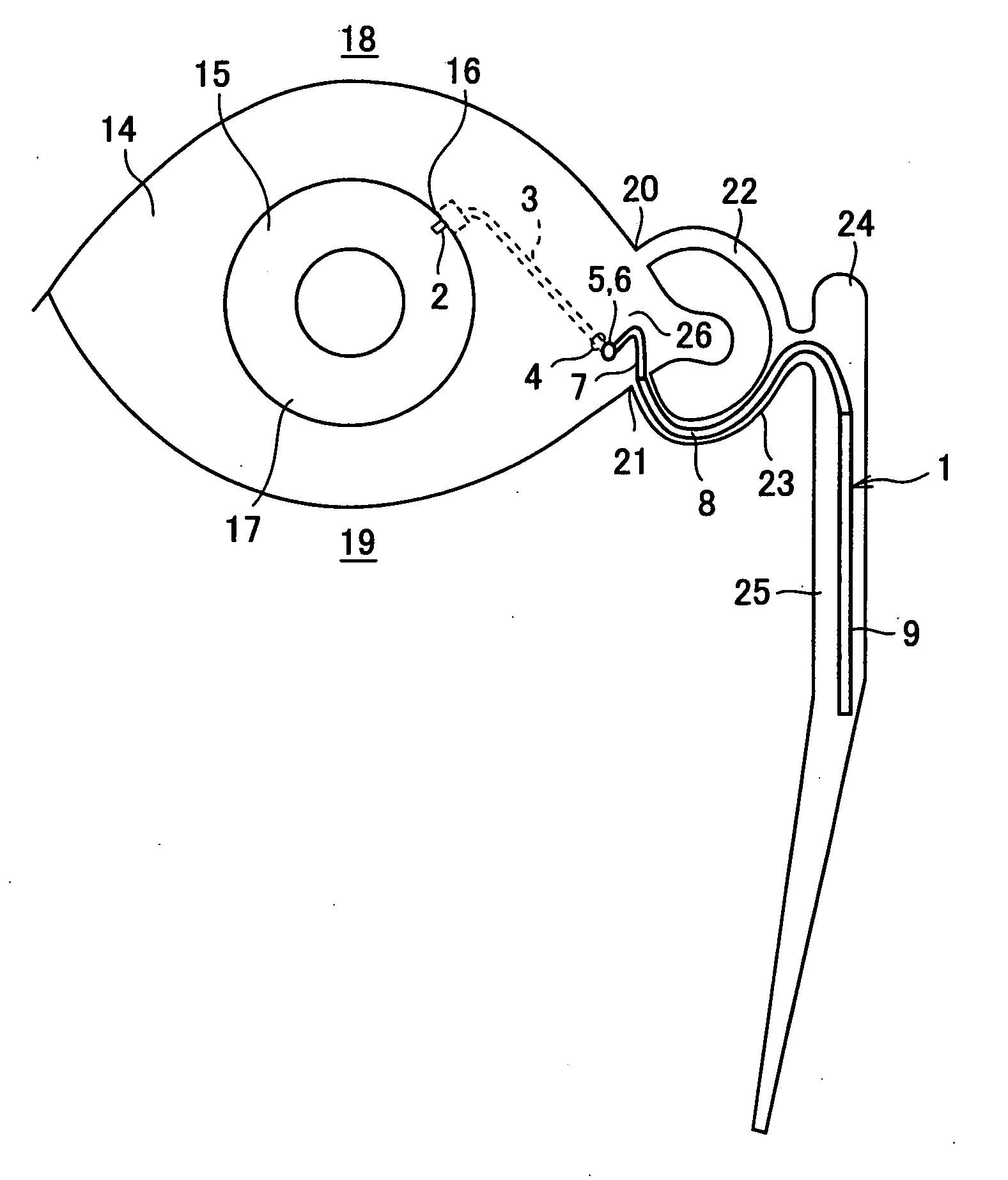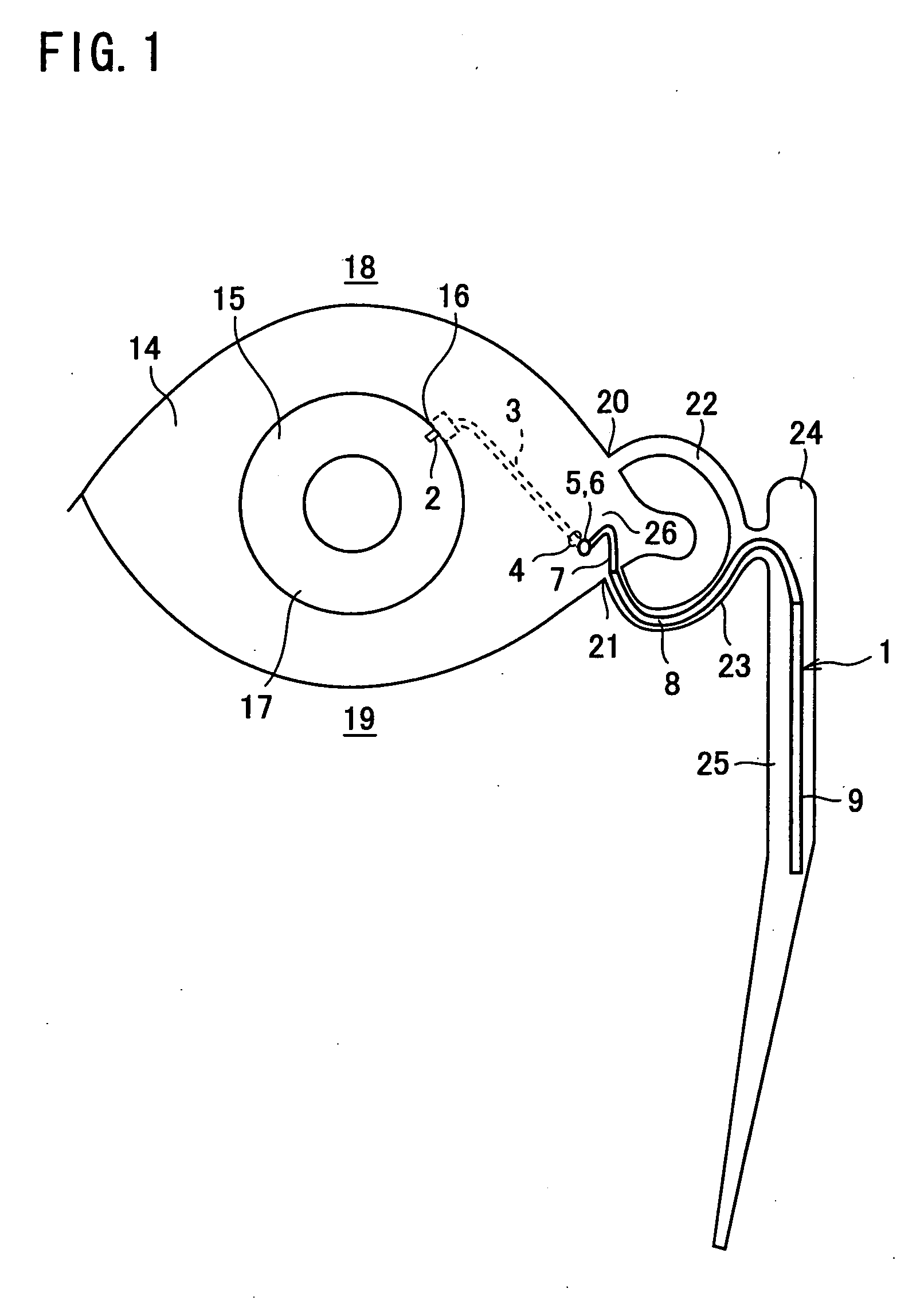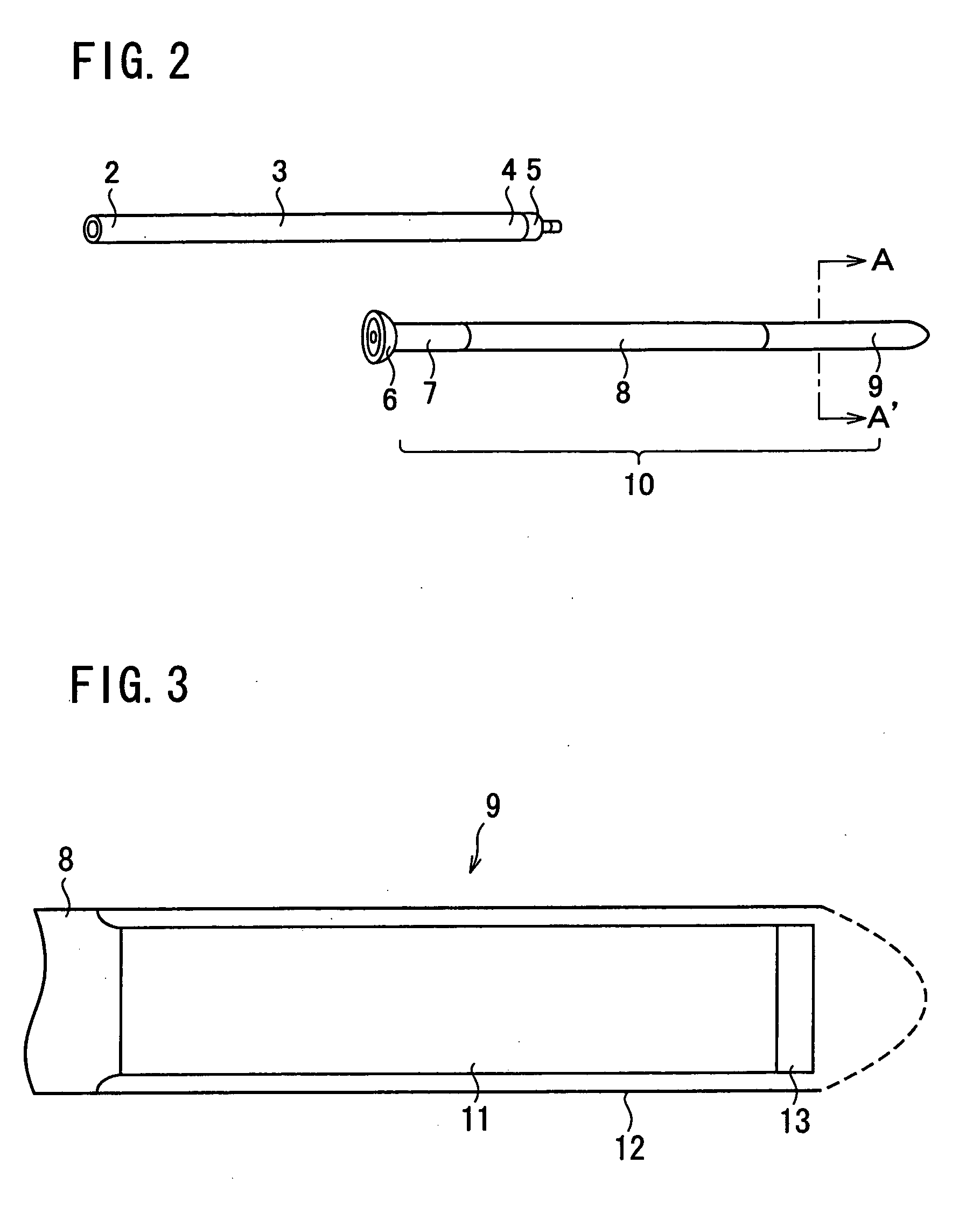Aqueous humor drainage implant for treatment glaucoma
a technology of aqueous humor and drainage implant, which is applied in the field of treatment, can solve the problems of clogging of the aqueous humor drainage, narrowing of the field of vision or visual loss, and many complications, and achieves the effects of preventing reflux infection, reducing invasiveness, and preventing damage to the eye or nasolacrimal du
- Summary
- Abstract
- Description
- Claims
- Application Information
AI Technical Summary
Benefits of technology
Problems solved by technology
Method used
Image
Examples
Embodiment Construction
[0057] Referring to FIG. 1 through FIG. 5, the following will describe an exemplary structure of an aqueous humor drainage implant for glaucoma treatment (hereinafter simply referred to as “aqueous humor drainage implant”). FIG. 1 schematizes how an aqueous humor drainage implant according to one embodiment of the present invention is positioned in an eye by being inserted into the nasolacrimal duct. FIG. 2 illustrates the overall structure of the aqueous humor drainage implant shown in FIG. 1, separately as an anterior part and a posterior part.
[0058] As shown in FIG. 1 and FIG. 2, the aqueous humor drainage implant of the present embodiment has three major parts: a first tube (guiding tube part, eye-side guiding tube part) 3; first and second joints (joint parts) 5 and 6; and a posterior part 10. Note that, in the following, the first joint 5 and the second joint 6 will be collectively referred to simply as joints 5 and 6, unless otherwise noted.
[0059] Specifically, the first tu...
PUM
 Login to View More
Login to View More Abstract
Description
Claims
Application Information
 Login to View More
Login to View More - R&D
- Intellectual Property
- Life Sciences
- Materials
- Tech Scout
- Unparalleled Data Quality
- Higher Quality Content
- 60% Fewer Hallucinations
Browse by: Latest US Patents, China's latest patents, Technical Efficacy Thesaurus, Application Domain, Technology Topic, Popular Technical Reports.
© 2025 PatSnap. All rights reserved.Legal|Privacy policy|Modern Slavery Act Transparency Statement|Sitemap|About US| Contact US: help@patsnap.com



